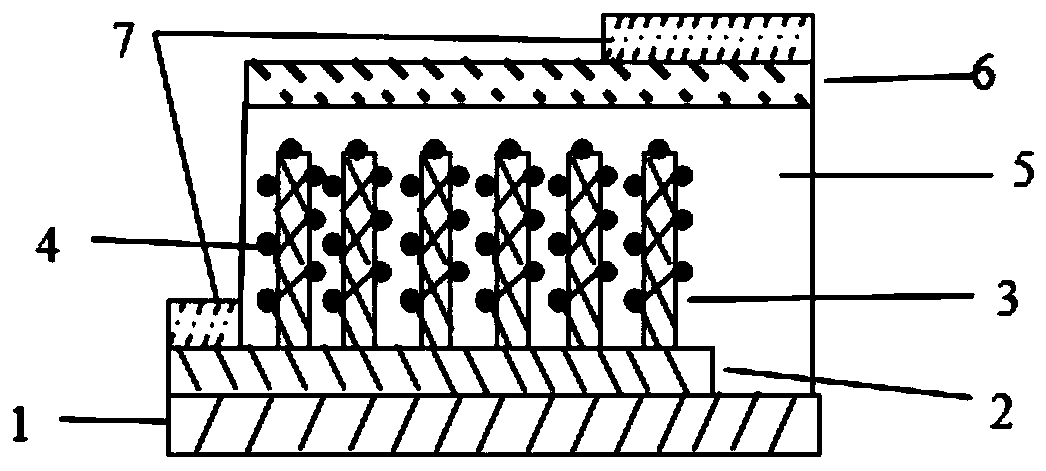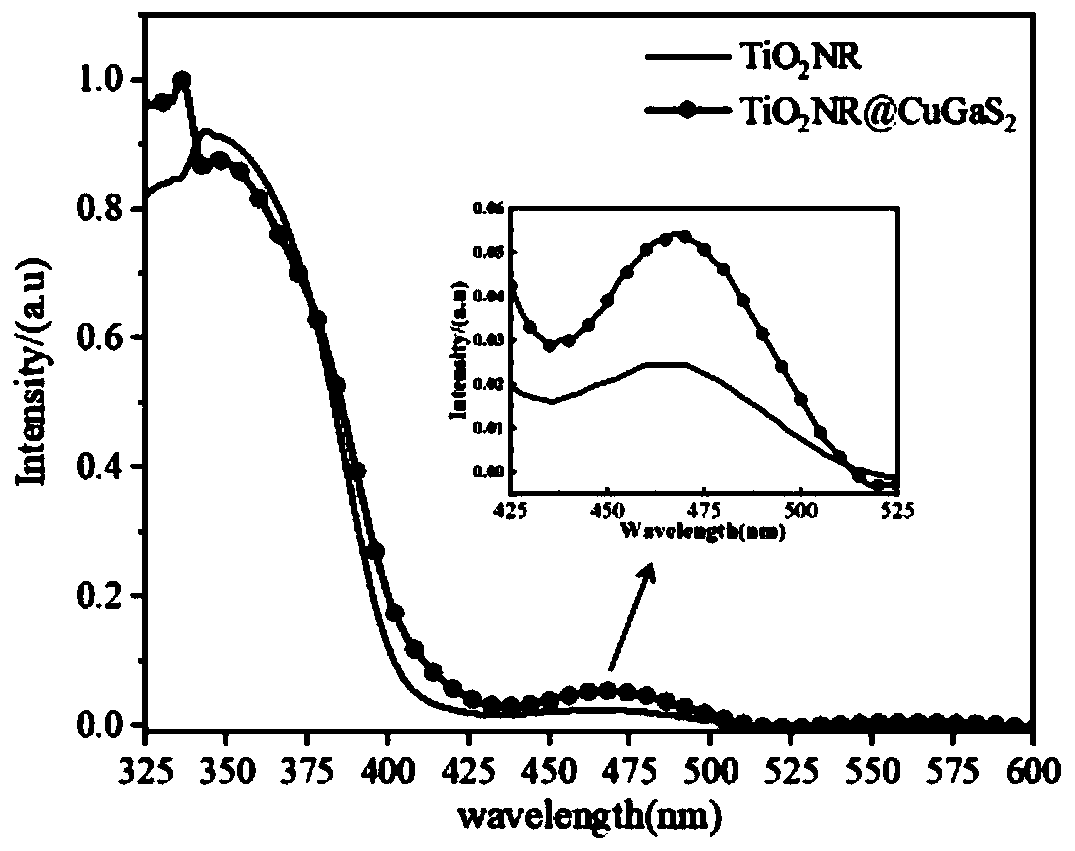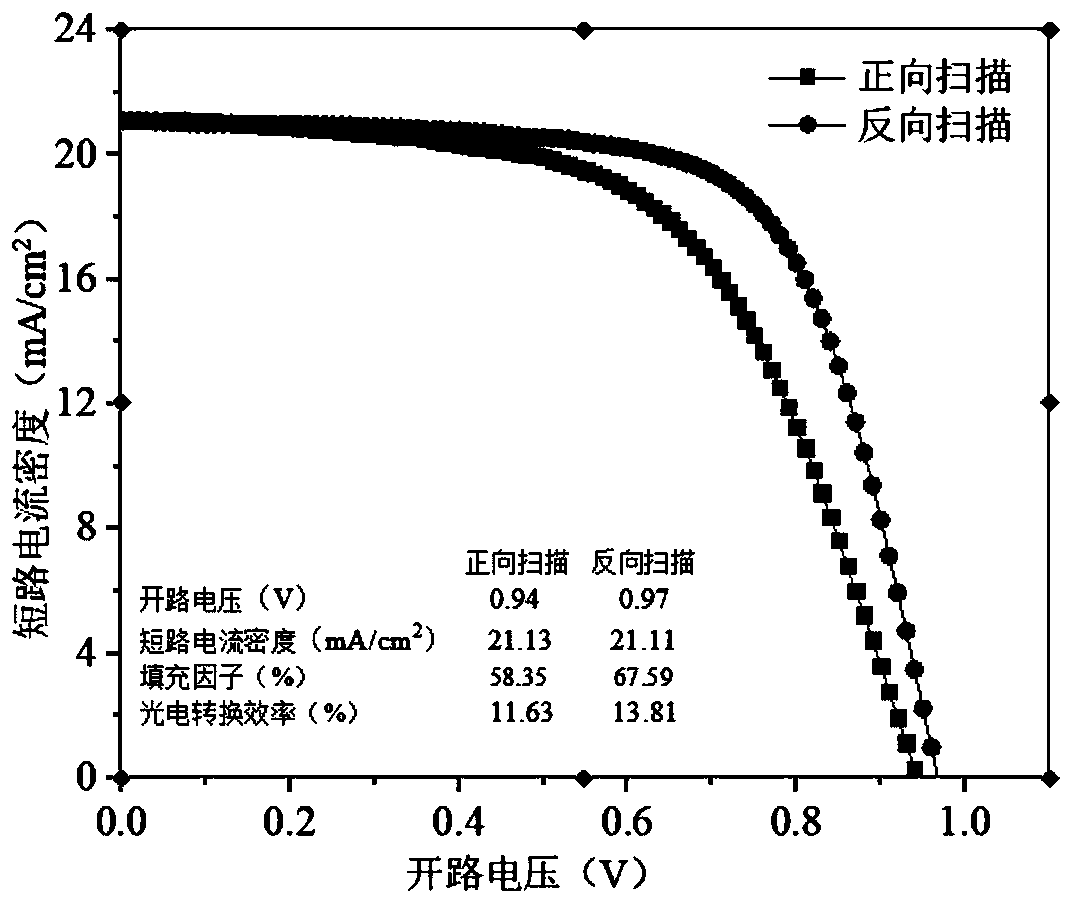Solar cell with double photoelectric conversion function
A solar cell and photoelectric conversion technology, applied in photovoltaic power generation, circuits, electrical components, etc., can solve problems such as scarcity, achieve low price, improve photoelectric conversion performance, and simple synthesis process
- Summary
- Abstract
- Description
- Claims
- Application Information
AI Technical Summary
Problems solved by technology
Method used
Image
Examples
Embodiment 1
[0024] The preparation process of the solar cell is as follows: (1) spin-coating TiO on transparent conductive glass 2 Seed layer, after high-speed 2000r / min spin coating, the substrate was calcined in a muffle furnace at 450°C; (2) TiO was prepared by hydrothermal method 2 For nanorods, add an appropriate amount of tetrabutyl titanate to a mixture of equal volume ratios of water and concentrated hydrochloric acid, stir to form a sol, transfer it to a polytetrafluoroethylene reactor, place it in a 170°C oven for hydrothermal reaction for 90 minutes, and then After natural drying, it was calcined in a muffle furnace at 300°C; (3) the substrate was treated in an aqueous solution of titanium tetrachloride, dried and calcined at 500°C in a muffle furnace; (4) by continuous ion spin coating method To prepare the quantum dot layer, the GaCl 3 , CuCl 2 、Na 2S was made into a solution with a concentration ratio of 1:1:2, and was spin-coated on the substrate in sequence, and the abo...
Embodiment 2
[0026] The preparation process of the solar cell is the same except the quantum dot preparation process in step 4 of Example 1. The scanning electron microscope photos of the front and cross-section of titanium dioxide nanowires, and the data of the photoelectric conversion efficiency of the battery are shown in image 3 and Figure 4 .
[0027] In a two-dimensional ordered array (n-type / p-type) as the carrier transport layer, quantum dots and halide perovskite as dual photoelectric conversion materials. Quantum dots have the advantages of high extinction coefficient, simple synthesis process, quantum confinement effect, multi-exciton effect, and mainly absorb short-wavelength bands of visible light, which are compatible with the high extinction coefficient, double-carrier transport properties, and long-carrying current of perovskite materials. The advantages of sub-transmission distance, less defect state density and full-band absorption of visible light are combined to imp...
PUM
 Login to View More
Login to View More Abstract
Description
Claims
Application Information
 Login to View More
Login to View More - R&D
- Intellectual Property
- Life Sciences
- Materials
- Tech Scout
- Unparalleled Data Quality
- Higher Quality Content
- 60% Fewer Hallucinations
Browse by: Latest US Patents, China's latest patents, Technical Efficacy Thesaurus, Application Domain, Technology Topic, Popular Technical Reports.
© 2025 PatSnap. All rights reserved.Legal|Privacy policy|Modern Slavery Act Transparency Statement|Sitemap|About US| Contact US: help@patsnap.com



